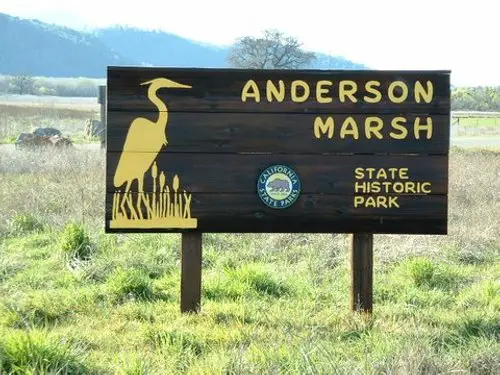
LAKE COUNTY – What's the value of local state parks to the county's economy? Based on a recently released study, the answer is millions of dollars.
As state officials consider a proposal by Gov. Arnold Schwarzenegger to close 220 of the state's 279 state parks – including Lake County's Anderson Marsh – a newly released study gives a look at just how important parks are to the state and local communities.
The California Parks and Recreation Department commissioned the study, which was conducted by California State University, Sacramento's Department of Recreation, Parks and Tourism Administration.
Schwarzenegger is suggesting the park closures – along with thousands of park employee layoffs – in an effort to save an estimated $143 million in state general fund monies.
But the losses incurred by the parks could be much greater than the money the governor is proposing to save.
The study found that 74.9 million people visit California state parks annually, spending an average of $4.32 billion per year in park-related expenditures.
It also reported that park visitors spend an average of $57.63 per person per visit, including $24.63 inside state parks and nearby communities, and $33 in communities more than 25 miles from the park being visited.
Recreation, Parks and Tourism Administration faculty and students surveyed 9,700 visitors at 27 state parks representing the diversity of the parks system’s 279 parks. The survey was taken from fall 2007 to February 2009, according to the report.
Professor David Rolloff of Sacramento State's Recreation, Parks and Tourism Administration told Lake County News that the closest parks to Lake that were in the sample were MacKerricher State Park in Fort Bragg and Mt. Tamalpais near San Francisco.
Of the visitors surveyed, 11.95 percent were non-residents of California, and their average spending per person was $184.91.
Based on the calculated $4.32 billion in park-related visitor expenditures per year, $1.66 billion is generated by non-residents of California, the survey found.
Rolloff said the study as been in the works for a number of years, with data collection beginning in 2007. It's part of a much larger study by the State Parks Department to look at visitors and park usage.
“One of the reasons why we decided to come forth with the data was that it's very relevant right now,” Rolloff said, referring to the proposal to close the parks.
A full report is due out later this summer, said Rolloff.
Rolloff called the spending figure of $57.63 per person per visit “pretty impressive,” especially in light of the tough economy in the last few years.
But that economic downturn has had another effect. “A lot of people are actually staying more local,” and choosing to enjoy nature at nearby state parks, he said. “It seems to be a pattern we're seeing.”
Debra Sommerfield, deputy county administrative officer for Economic Development, said the numbers the study suggests look right, and that she wouldn't be surprised that the numbers are accurate based on her study of tourism trends.
A report issued last year by the California State Parks Foundation found that Anderson Marsh is visited by 43,499 people each year, generating $2,060 in revenue, while Clear Lake State Park has 100,166 visitors annually, with revenue of $332,782.
If the Sacramento State study is accurate, that means that Anderson Marsh and Clear Lake State Park offer $2.5 million and $5.7 million, respectively, in benefit to the local economy.
Anderson Marsh was placed on the closure list this year, which has prompted local officials to write the state to seek alternatives. Last year Anderson Marsh and Clear Lake State Park were both included on a list of 48 state parks that Schwarzenegger had suggested to close to deal with the state budget crisis.
Clear Lake State Park was spared this year, because boating and gas tax revenue – not state general tax revenue – are primary funding sources. County officials have emphasized that keeping Clear Lake State Park open is a priority.
Sandra West, co-owner of Edgewater Resort in Kelseyville, said having Clear Lake State Park close by has benefited her business.
That park, she said, is full every summer with people who enjoy the lake, and it brings a lot of money into the county. West said she's also enjoyed a great relationship with the park and its staff.
She said the fiscal impact of the parks on the state and their surrounding communities is “huge.”
West said she knows that the state is having huge problems, but she would hate to see either of the parks close because of their value to the community.
The California State Parks Foundation is organizing a “Save Our State Parks Weekend” later this month.
They're encouraging people to visit their state parks and show support by wearing green or a green on the weekend of June 20, during which time they also can celebrate the Summer Solstice and Fathers Day. More information on the effort is available at www.calparks.org .